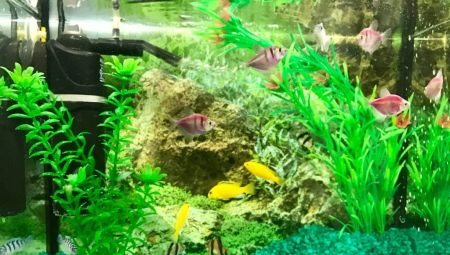The aquarium is an artificial ecosystem in which one of the main places belongs to the soil. Sand of high quality plays an important role in the life of all living and growing organisms in it. The choice of this component of the ecosystem should be considered especially demandingto provide a natural filtration of the aquarium, and microorganisms, plants and animals - a place for shelter and habitat.
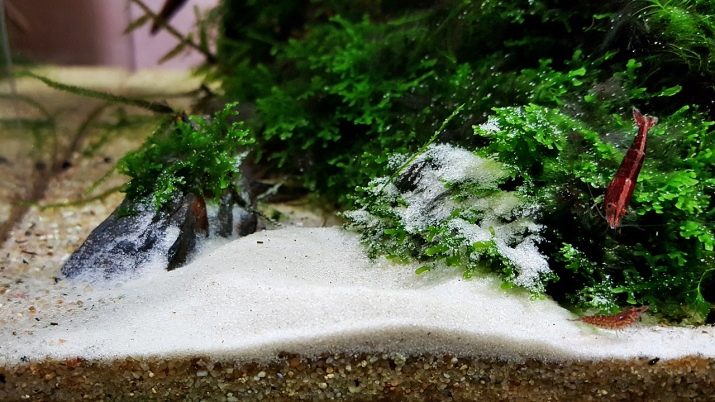
Features & Functions
Sandy substrate is widespread in aquariums due to ease of care and accessibility. In it, the simplest creatures found their habitat. The advantages of sandy soil include the following characteristics:
- good survival of aquarium plants;
- normal growth of green spaces;
- ease of cleaning the sandy bottom;
- fulfillment of all assigned biological tasks;
- ideal for the mass of bottom creatures who can not imagine their life without digging a light substrate;
- naturalness and attractiveness of appearance.

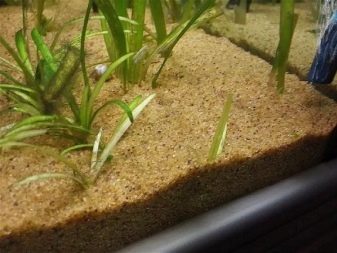
Sand for an aquarium has not only advantages, but also some disadvantages:
- to rinse and carry out the preparation, it is necessary to carry out more than one laborious procedure;
- this type of soil requires special care, otherwise accumulation of garbage may occur;
- some types of sand can change the chemical component of water;
- This type of substrate contains a small amount of nutrient components, which are not always enough for plant growth, so from time to time it will be necessary to feed.
Varieties
Today, aquarium owners can choose one of the types of sand depending on its characteristics.
- River. This aquarium substrate has been used for a long time. According to some experts, this species is considered one of the best. You can not only buy river sand in a specialized store, but also pick it yourself on the river bank, and then sift it.
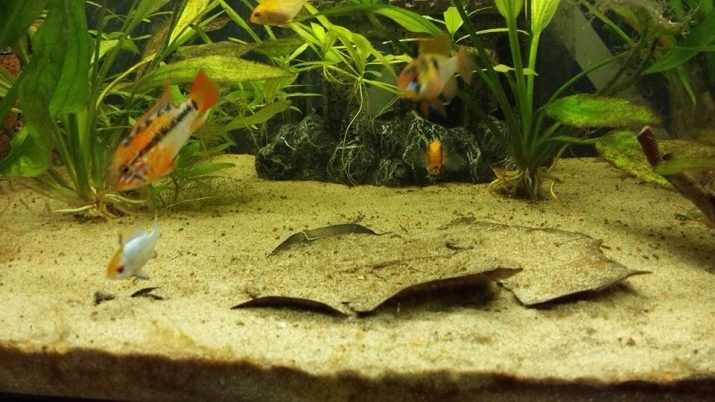
- Nautical. For an artificial freshwater ecosystem, coarse sand collected from the seabed would be a worthy option. Before sending it to the aquarium, the substrate should be washed and sieved well, thereby eliminating salt and other impurities. On an ordinary substrate from the sea at the bottom of the aquarium, plants and organisms grow and multiply beautifully. It is recommended to put “live” sand in a marine aquarium. In this embodiment of the substrate, colonies of microorganisms from the sea may be contained.
Without going through the drying process, they quickly begin to establish water balance. In the air, "living" sand quickly dies, respectively, so it can not be stored.
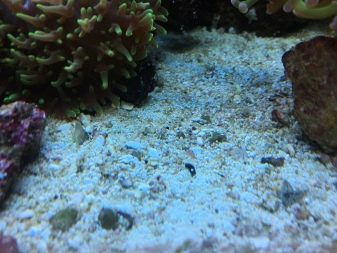
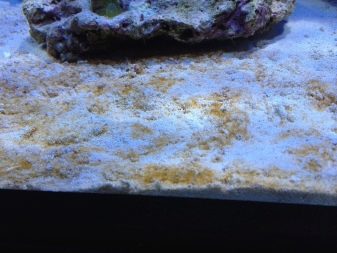
- Coral. Aragonite substrate is obtained by the deposition of small residues of coral, mollusk. This sand has in its composition a large amount of calcium, which increases water hardness. Coral chips can be bought in various fractions, starting from the smallest. The best option for its application will be the sea and pseudo-sea bottom, as well as the alkaline artificial ecosystem.
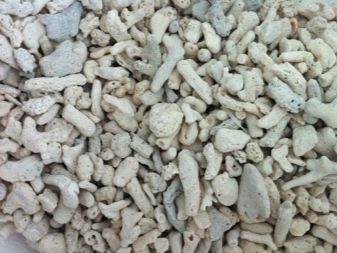
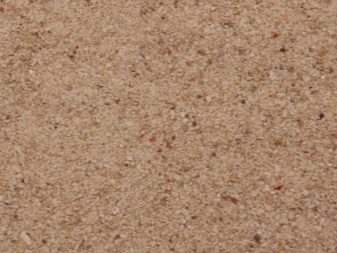
- White. Owners of aquariums can decorate the tank with both white and colored sand. Since this substrate can be of different origin, it does not equally affect the state of water in the ecosystem. White sand can be river, sea, aragonite, quartz. Before using the substrate, you should carefully read the rules for its use.
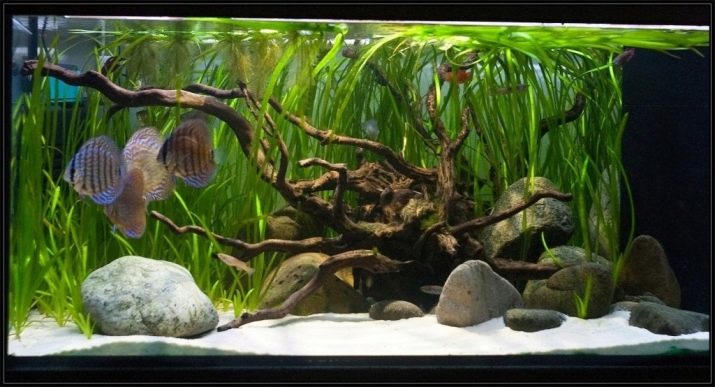
- Black quartz. Due to the presence in the sand of ilmenite, magnetite, hematite in different percentages, the sand becomes black.
There are no restrictions on the use of such a substrate; it does not contribute to a change in the characteristics of the aquatic environment. In contrast to the white version, black favorably emphasizes the appearance of living creatures and plants against its background.
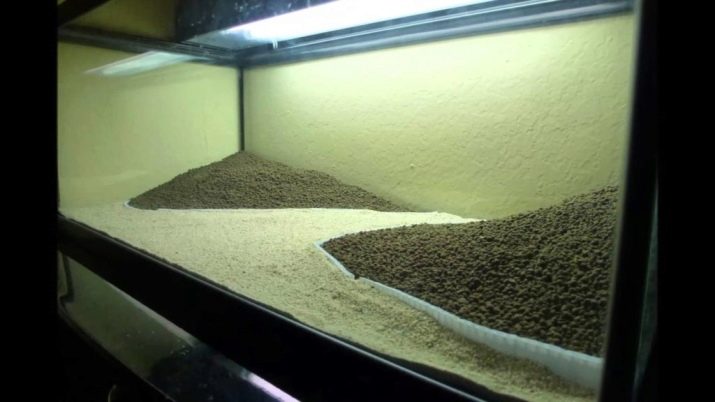
- Color. To originalize the interior of the aquarium, you can use colored sand. With it, pets can get vivid and unusual landscapes in the tank. Before purchasing colored sand, you should carefully study its features, thereby making sure that it is harmless to the inhabitants of the ecosystem. Shades of such a substrate can be very different, blue, red, marble, pomegranate, yellow, brown and purple are very popular.
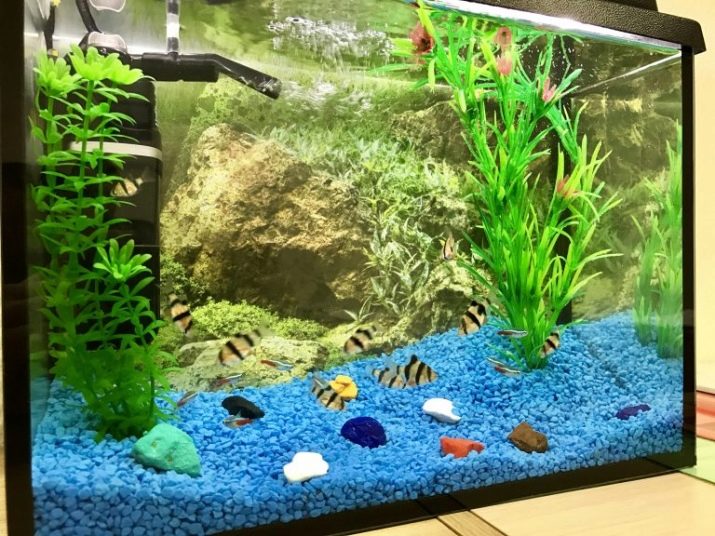
How to choose?
In order to launch a new aquarium and achieve its normal functioning, it must have a high-quality substrate. When choosing sand, it is worth taking into account its fraction, origin and layer thickness.
Do not take into account only the decorating component, this is not enough for the quality functioning of the aquarium.
Characteristics of sand that should be considered when choosing a substrate for an aquarium.
- Fraction. Do not choose microscopic sand or with too large a fraction. The optimal size is 1.5-2 mm. Provided that the grains of sand are smaller, deterioration of aeration, stagnation and development of bacteria occurs. If the pebbles are too large, then organic matter is poorly washed out of it, and vegetation does not take root well.
- Sand layer thickness Ideally should be between 4 and 6 millimeters. This indicator promotes the growth and development of living creatures and plants in an artificial ecosystem.
- Type of sand. It is worth remembering that sand of red and yellow color has in its composition a large amount of iron. Limestone chips can disturb the rigidity of the water balance, which will be detrimental to aquatic organisms.
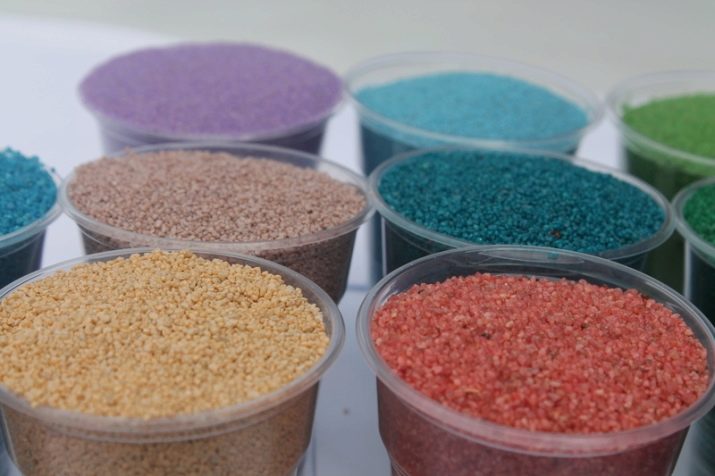
How to prepare?
Before placing in the aquarium, it is worth processing each of its elements. In order to exclude the presence of harmful microorganisms, it is worthwhile to carry out certain procedures.
- Rinse mixtures and products under running water. In this case, sand is poured into the tank and washed under a not too intense stream. At the same time, it must be mixed by hand. The substrate is freed from impurities.
- Heat treatment of sand is necessary immediately after the completion of the first stage of cleaning. The substrate is boiled for 25 minutes.
- You can calcine the sand in the oven at a temperature of 150 degrees for 30 minutes.
- To remove excess phosphate, you can treat the substrate with a 30% citric acid solution, then rinse with running water.


Sand filling and subsequent maintenance
Pour disinfected sand into the aquarium with a plastic spatula. At the bottom of the ecosystem you can lay the peat layer in conjunction with nutrients. Sand should be poured into an aquarium in which there is no water, while making a bias on the front side. First of all, it is worth arranging sand of a large fraction, after which it is finer. The thickness of the front sand layer can be 20 millimeters, and the back 80 millimeters.
Alternatively, you can create a multi-level composition using pebbles.
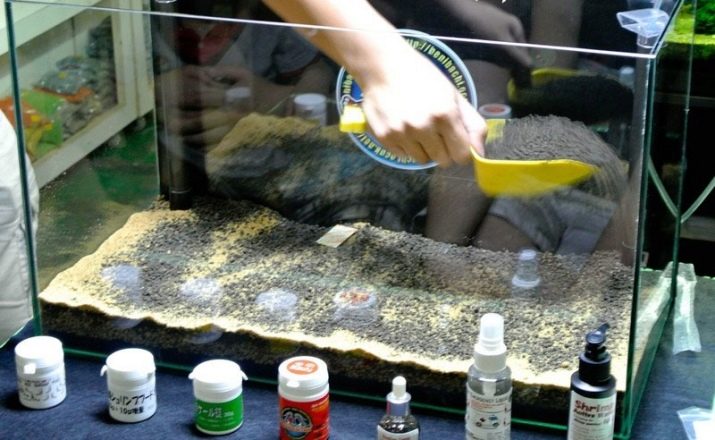
It's no secret that fish waste is toxic, it pollutes water and substrate, so they should be disposed of regularly. After starting the aquarium until the first cleaning, it may take 30 days. The following cleansing procedures can be carried out at intervals of one to two months. If the water gets dark and appears dull, do not panic and clean the aquarium every day.
All the sediment that is present in the aquarium can be removed with the help of full purification, then it will be necessary to remove the fish and plants for a while and place them in another container. In this case, the sand is washed under running water. Such procedures should be carried out every year. They clean sand in artificial ecosystems using ordinary siphons. With the help of a pipe funnel, it is worth loosening the substrate, while the dirt is absorbed into the tube.
Learn how to care for fine sand in an aquarium from the next video.
